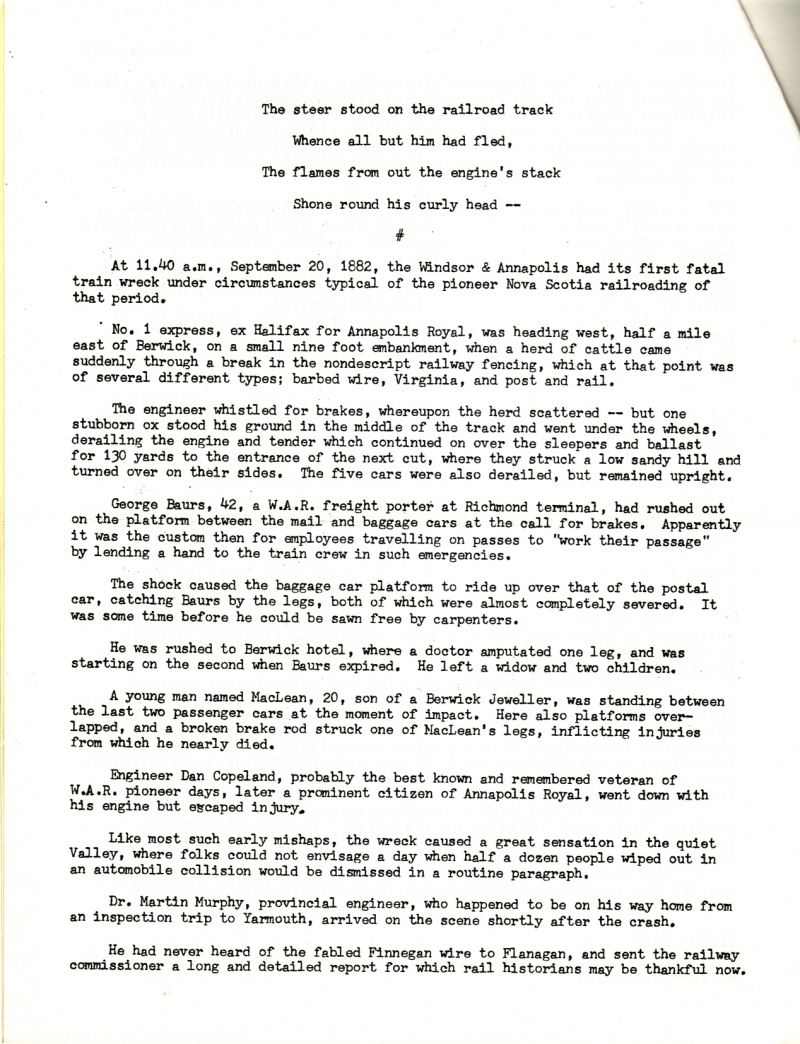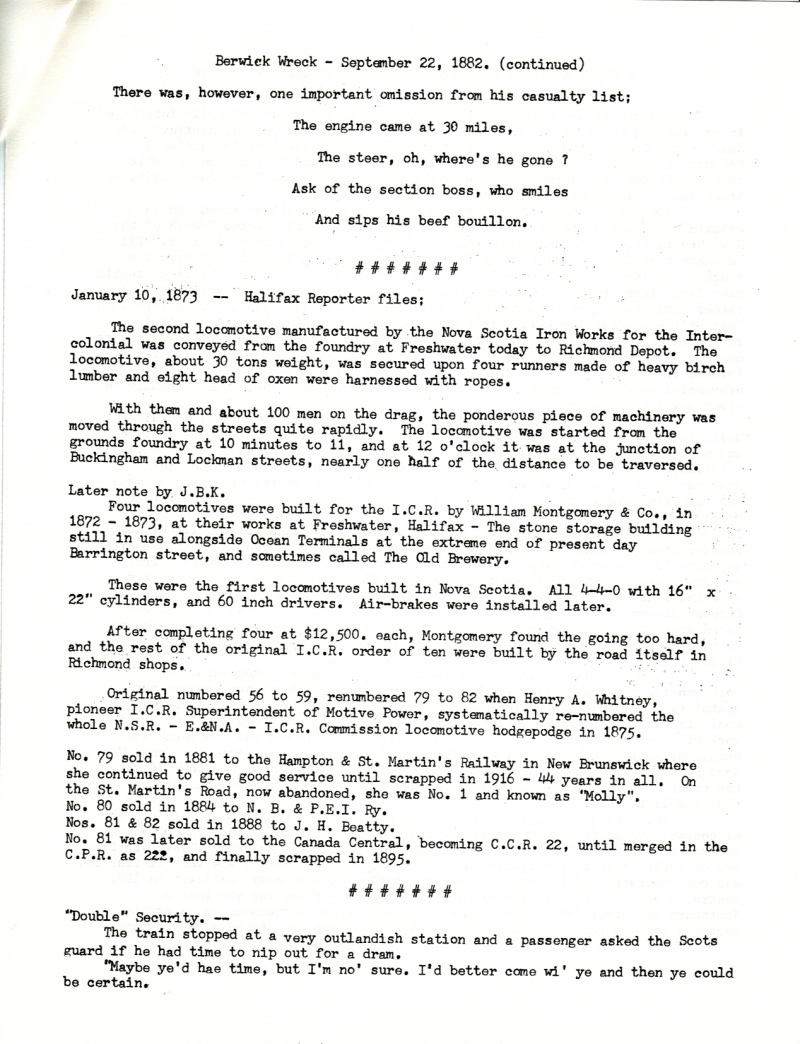Dominion Atlantic Railway Digital Preservation Initiative - Wiki
Use of this site is subject to our Terms & Conditions.
Scotian Railroad Society 1983-03 News - First Fatal Wreck on the Future DAR
Scotian Railroad Society - News March 1983 - First Fatal Wreck on the Future DAR
An account of the first fatal wreck on the DAR by the Scotian Railroad Society.
A transcription of the part of the two pages dealing with the W.A.R. wreck is below, for ease of reading and search purposes.
[Editor's note: The "humorous" rhyme doesn't seem funny given one person died.]
Reference Tag
Please use this tag when referring to this article: Scotian Railroad Society, News March 1983
The steer stood on the railroad track
Whence all but him had fled,
The flames from out the engine's stack
Shone round his curly head
At 11.40 a.m., September 20, 1882, the Windsor & Annapolis had its first fatal train wreck under circumstances typical of the Pioneer Nova Scotia railroading of that period.
No. 1 express, ex Halifax for Annapolis Royal, was heading west, half a mile east of Berwick, on a small nine foot embankment, when a herd of cattle came suddenly through a break in the nondescript railway fencing, which at that point was of several different types; barbed wire, Virginia, and post and rail.
The engineer whistled for brakes, whereupon the herd scattered -- but one stubborn ox stood his ground in the middle of the track and went under the wheels, derailing the engine and tender which continued on over the sleepers and ballast for 130 yards to the entrance of the next cut, where they struck a low sandy hill and turned over on their sides. The five cars were also derailed, but remained upright.
George Baurs, 42, a W.A.R. freight porter at Richmond terminal, had rushed out on the platform between the mail and baggage cars at the call for brakes. Apparently it was the custom then for employees travelling on passes to “work their passage” by lending a hand to the train crew in such emergencies.
The shock caused the baggage car platform to ride up over that of the postal car, catching Baurs by the legs, both of which were almost completely severed. It was some time before he could be sawn free by carpenters.
He was rushed to Berwick hotel, where a doctor amputated one leg, and was starting on the second when Baurs expired. He left a widow and two children.
A young man named MacLean, 20, son of a Berwick Jeweller, was standing between the last two passenger cars at the moment of impact. Here also platforms overlapped, and a broken brake rod struck one of Maclean's legs, inflicting injuries from which he nearly died.
Engineer Dan Copeland, probably the best known and remembered veteran of W.A.R. pioneer days, later a prominent citizen of Annapolis Royal, went down with his engine but escaped injury.
Like most such early mishaps, the wreck caused a great sensation in the quiet Valley, where folks could not envisage a day when half a dozen people wiped out in an automobile collision would be dismissed in a routine paragraph.
Dr. Martin Murphy, provincial engineer, who happened to be on his way home from an inspection trip to Yarmouth, arrived on the scene shortly after the crash.
He had never heard of the fabled Finnegan wire to Flanagan, and sent the railway commissioner a long and detailed report for which rail historians may be thankful now.
There was, however, one important omission from his casualty list;
The engine came at 30 miles,
The steer, oh, where's he gone?
Ask of the section boss, who smiles
And sips his beef bouillon.

